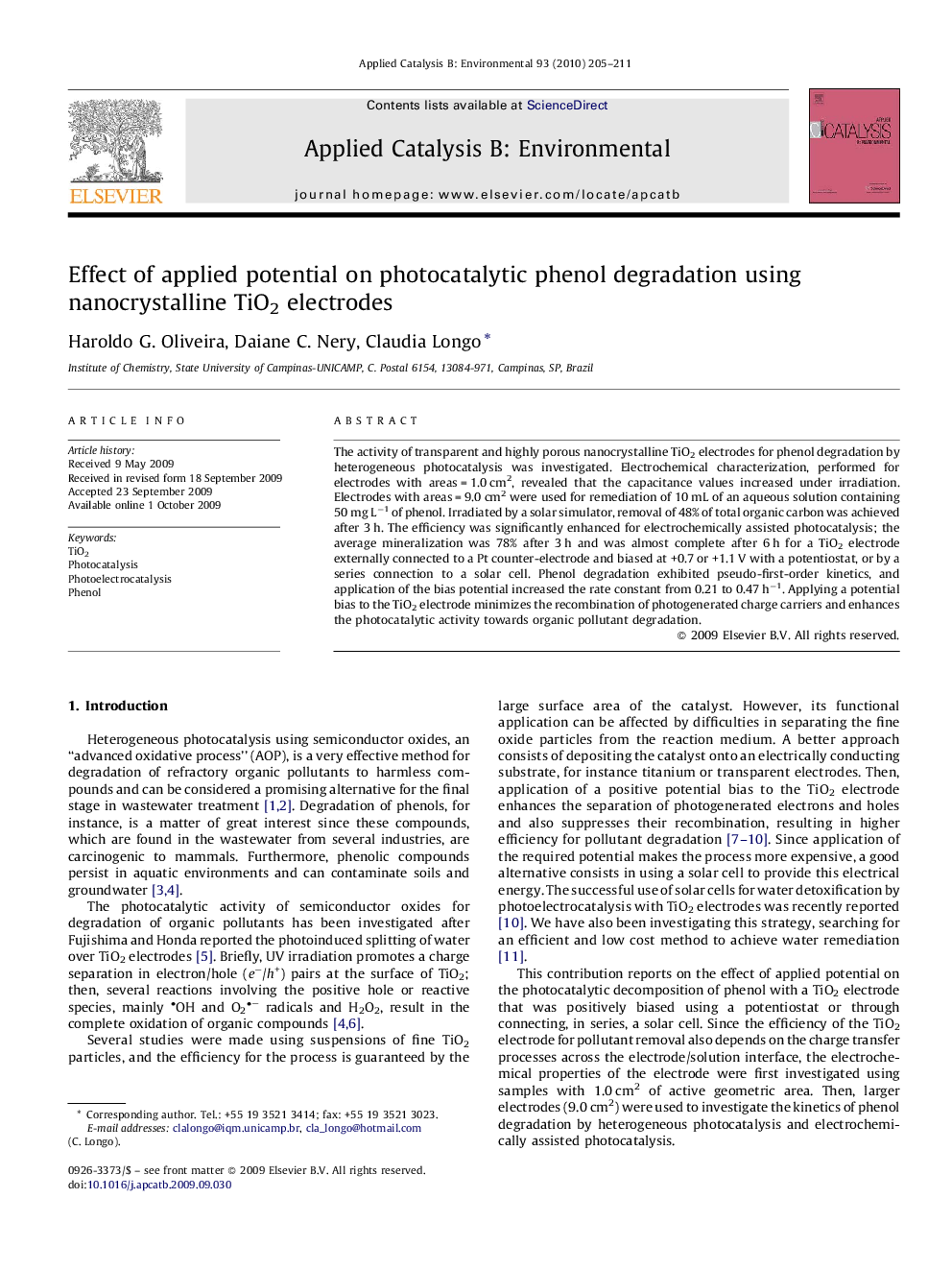| Article ID | Journal | Published Year | Pages | File Type |
|---|---|---|---|---|
| 47607 | Applied Catalysis B: Environmental | 2010 | 7 Pages |
The activity of transparent and highly porous nanocrystalline TiO2 electrodes for phenol degradation by heterogeneous photocatalysis was investigated. Electrochemical characterization, performed for electrodes with areas = 1.0 cm2, revealed that the capacitance values increased under irradiation. Electrodes with areas = 9.0 cm2 were used for remediation of 10 mL of an aqueous solution containing 50 mg L−1 of phenol. Irradiated by a solar simulator, removal of 48% of total organic carbon was achieved after 3 h. The efficiency was significantly enhanced for electrochemically assisted photocatalysis; the average mineralization was 78% after 3 h and was almost complete after 6 h for a TiO2 electrode externally connected to a Pt counter-electrode and biased at +0.7 or +1.1 V with a potentiostat, or by a series connection to a solar cell. Phenol degradation exhibited pseudo-first-order kinetics, and application of the bias potential increased the rate constant from 0.21 to 0.47 h−1. Applying a potential bias to the TiO2 electrode minimizes the recombination of photogenerated charge carriers and enhances the photocatalytic activity towards organic pollutant degradation.
